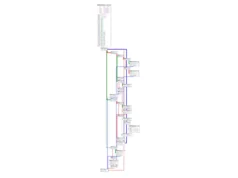To contribute your work to the project you need to create a pull request on the Github where it is hosted.
The pull request should contain all needed information – such as an exploit itself, exploit prerequisites, exploit YAML profile if needed hardware profile, hardware prerequisites and if possible needed hardware verification code.
The pull request would be inspected for possible malicious actions and then merged and added to the installation VM.
There are 5 possible codes for non-DoS exploits:
- 0 – error
- 1 – not vulnerable
- 2 – vulnerable
- 3 – undefined
- 4 – none of the 4 states observed (reserved for the toolkit only to identify a problem in the toolkit itself, not in the exploit)
These codes translate into the following wrapper functions that you can import into your exploit code or wrapper:
from bluekit.report import report_vulnerable, report_not_vulnerable, report_error, report_undefined, report_none_of_4_state_observed- report_vulnerable(data: str) – report that the target is vulnerable to the exploit
- report_not_vulnerable(data: str) – report that the target is not vulnerable to the exploit
- report_error(data: str) – report that there was an error during the execution of an exploit
- report_undefined(data: str) – for future use
- report_none_of_4_state_observed(data: str) – for future use
In all functions “data” argument represents the data that would appear in the report and logs.
















